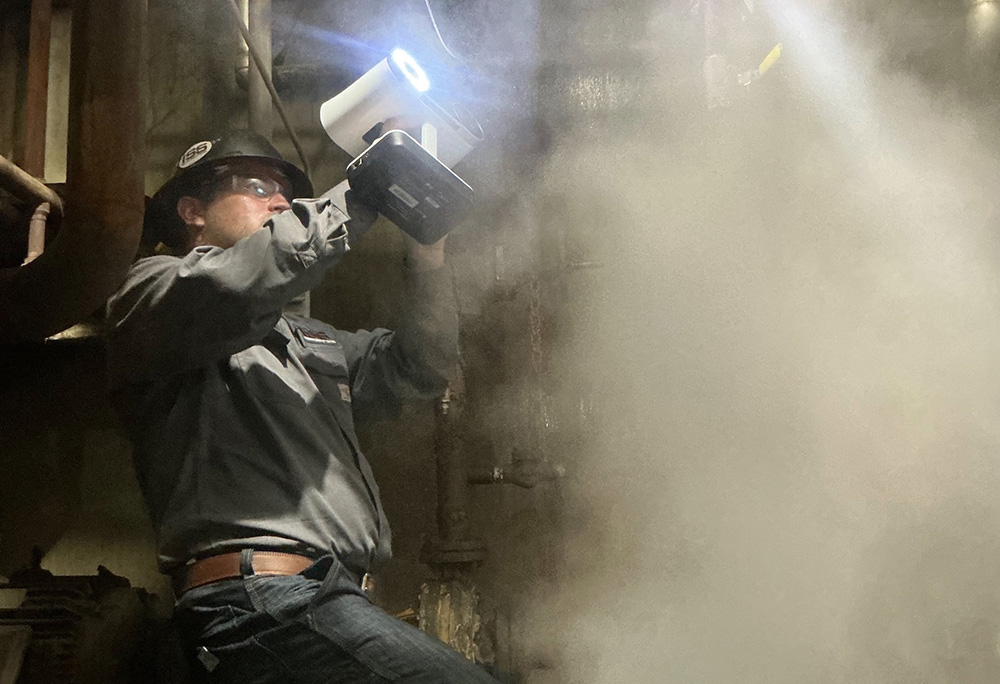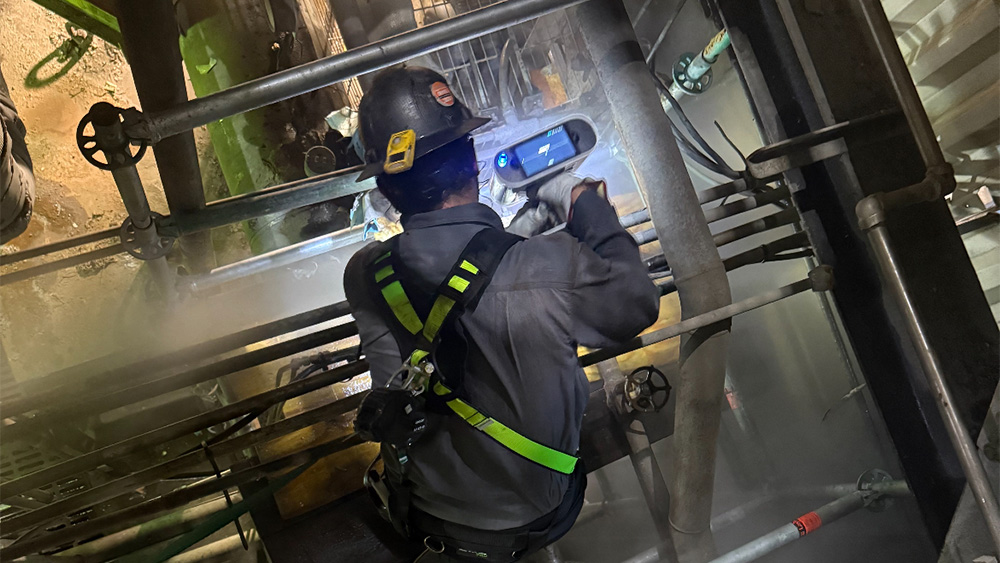Courtesy of ISS
Using traditional measuring tools while harnessed up and in awkward positions can be difficult. Here, an ISS technician captures data with Artec Leo while suspended from a harness.
When components leak, sizing them up for repairs can be extremely difficult. This isn’t just due to distance and locale—many are underground or underwater—but also safety issues. If components carry hazardous substances, manual measurement is inherently riskier than noncontact alternatives. Visibility can also be an issue, with steam or process plumes blocking faulty pipes from view.
|
ADVERTISEMENT |
Likewise, in leak repair, time is of the essence. Bringing tapes, gauges, and calipers out to the site may be a time-tested means of measuring pipeline geometry, but it’s time-consuming, difficult to master, and occasionally error-prone. With complex jobs, these problems are only exacerbated. This leads many firms to revisit the technology behind their leak repair services.

Even in a hard-to-reach area, an ISS engineer can digitize pipe work using Artec Leo. Image courtesy of ISS.
…

Add new comment